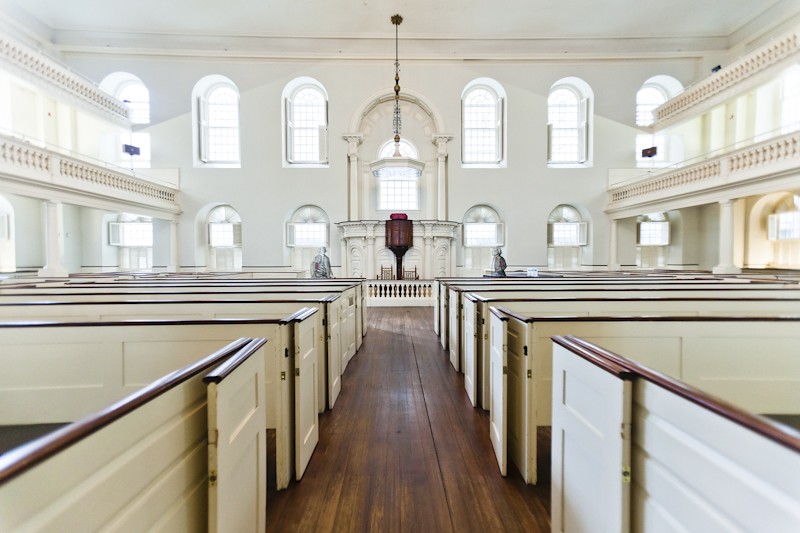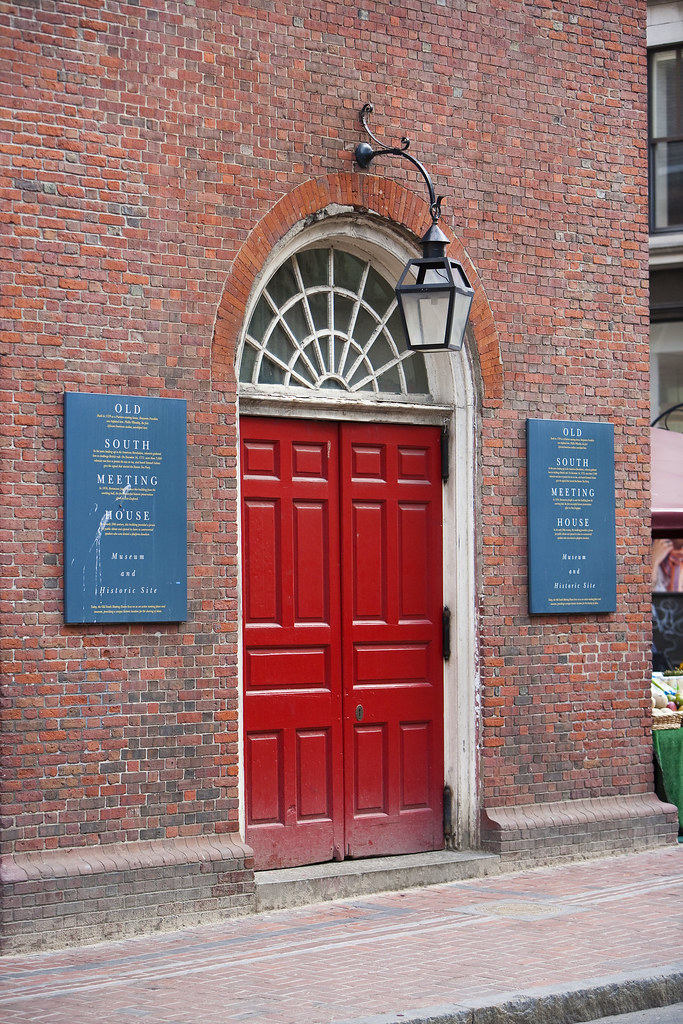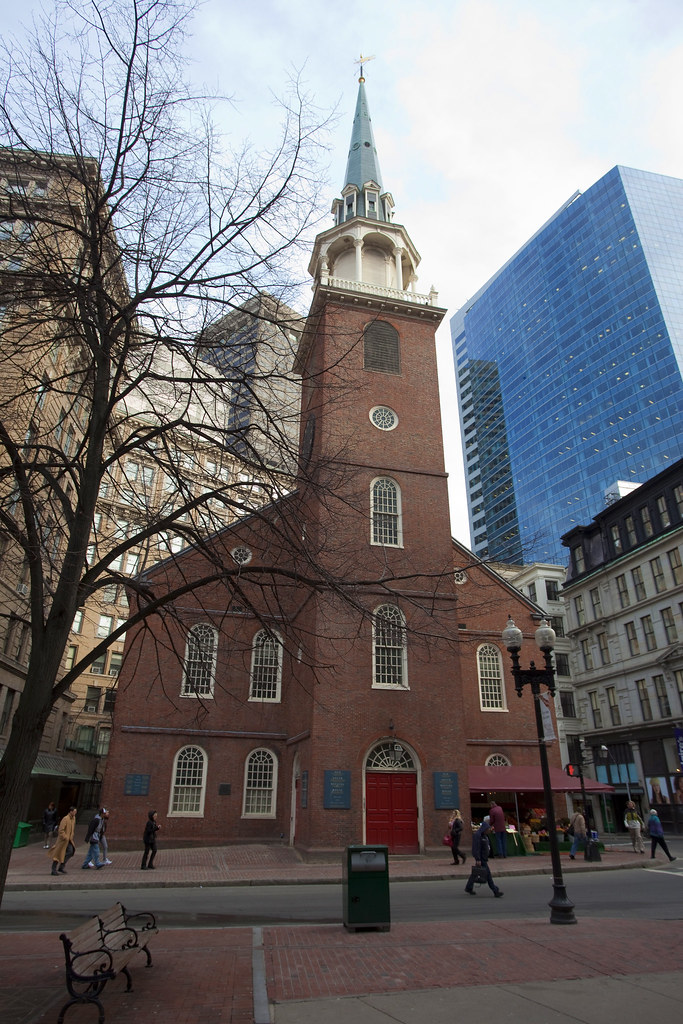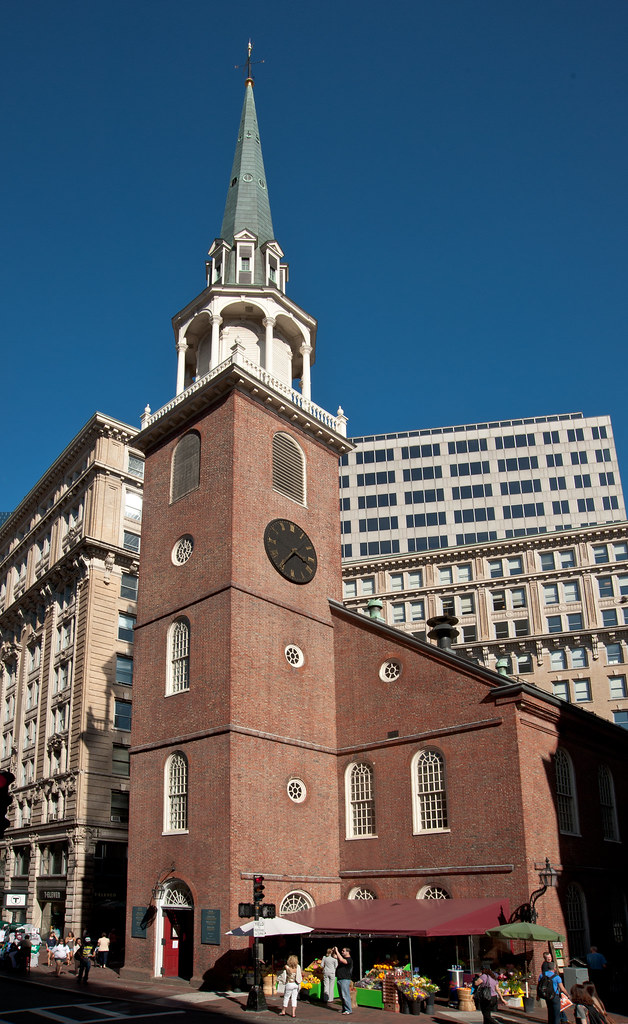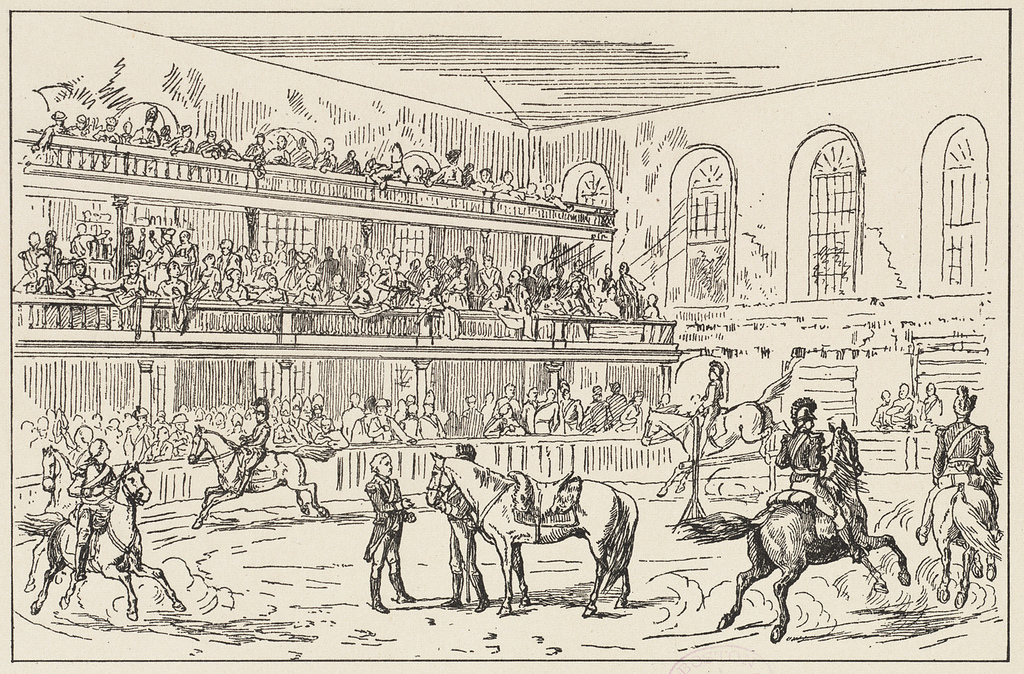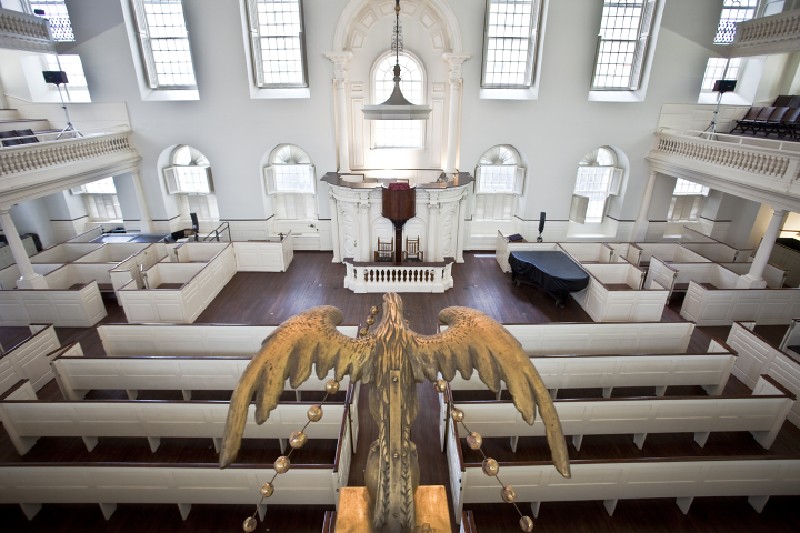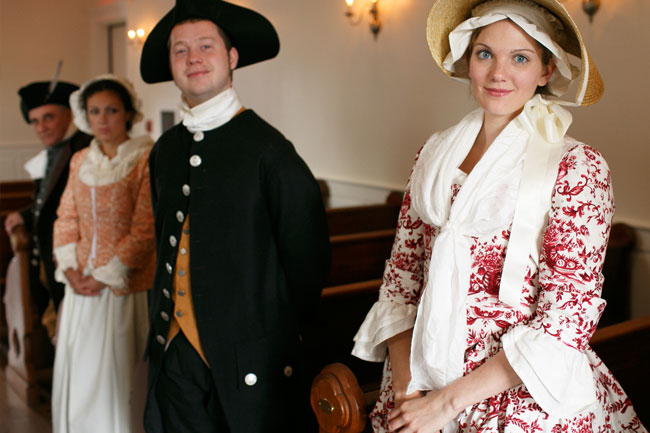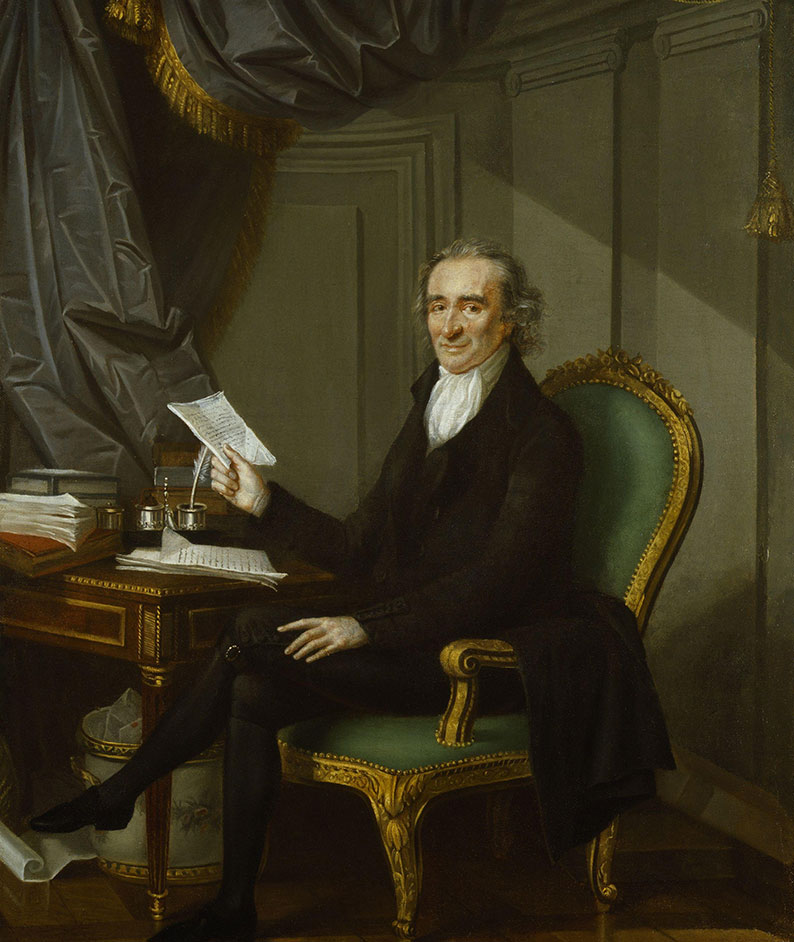Defining Moments at Old South Meeting House
Impressment and the Liberty Seizure
On June 14, 1768, a town meeting was called at Faneuil Hall to protest the impressment, or forcible induction, of New England sailors into British Naval service and the seizure of John Hancock’s sloop “Liberty” for violation of customs law, i.e. smuggling. So many people came to Faneuil Hall that the meeting was moved to Old South Meeting House. At the meeting, outraged colonists called for the British Sloop-of-War “Romney,” to stop seizing sailors to work “for the service of the King, in his ships of war.”
While the meeting was successful in curtailing impressment in Boston, the British ministry concluded that they could not keep their customs officers needed protection from Boston’s riotous mobs. Nearly 4,000 soldiers arrived in Boston in the fall of 1768. Many Patriots considered this “military occupation” an infringement of English political law, another challenge to their liberty. Many colonists regarded the presence of armed British troops in Boston to be both dangerous and insulting. Responding to initial protests, the Royal Governor ordered all but two regiments out of the town.
The Boston Massacre and Removal of the King’s Regiments
On March 5, 1770, increasing tensions erupted when British soldiers killed 5 men in what became known as “The Boston Massacre.” The next day, an angry assembly gathered at Faneuil Hall sent a committee to tell the Lieutenant-Governor “that the Inhabitants and Soldiery can no longer dwell together in safety.” The assembly agreed to hold a Town Meeting at 3 pm. By the afternoon, widespread frustration had swelled the meeting to include thousands, and so it was moved from Faneuil Hall to the Meeting House.
Inside the Meeting House, the committee announced that one regiment would be removed to Castle William in the harbor, but, led by Samuel Adams, the crowd cried out, “Both regiments or none!”
Adams and his committee again visited Hutchinson, and Adams said:
If you, or Col. Dalrymple under you, have the power to remove one regiment, you have the power to remove both…The voice of ten thousand freemen demands that both regiments be forthwith removed. Their voice must be respected, their demand obeyed.
The following morning, preparations began to remove both regiments to Castle William. In a letter to the Earl of Hillsborough, Hutchinson wrote, “I have represented to your lordship, that the authority of Government is gone in all matters wherein the controversy between the Kingdom and the colonies is concerned.” In England, members of Parliament balked at Hutchinson for being bullied by a little colony.
The Fifth of March Anniversary Orations
A town meeting resolved to mark the anniversary of “The Boston Massacre” with a public speech “to commemorate the barbarous murder of five of our Fellow Citizens on that fatal Day, and to impress upon our minds the ruinous tendency of standing Armies in Free Cities.”
Each year from 1772 to 1775, these massive gatherings of men, women and children were held at Old South Meeting House to commemorate the anniversary of the Boston Massacre, with rousing speeches by patriots John Hancock, Benjamin Church and Dr. Joseph Warren. Each year, the speaker and the people repeated the lines, “to impress upon our minds, the ruinous tendency of standing Armies,” a remembrance that kept outrage over the Boston Massacre alive.
The Tea Tax Debates of 1773
On Sunday, November 28, 1773, the Dartmouth was the first of the Tea Party ships to arrive in Boston Harbor. She later docked at Griffin’s Wharf on Tuesday, November 30. The tax on the tea had to be paid within twenty days, an absolute deadline of December 17.
On Monday, November 29, the day after the Dartmouth arrived, the first large-scale meeting to discuss the “tea crisis” occurred at Faneuil Hall. By this time, Boston had become a hotbed of dissent and radicalism and thousands gathered from Boston and surrounding towns to meet at Faneuil Hall. Nearly 4,000 people arrived at Faneuil Hall so the gathering was adjourned again to the larger Meeting House.
Samuel Adams described the meeting on November 29 in a letter to a friend:
…the people met in Faneuil hall, without observing the rules prescribed by law for calling them together…they were soon obliged for the want of room to adjourn to the Old South Meeting House; where were assembled upon this important occasion 5000, some say 6000 men, consisting of the respectable inhabitants of this and the adjacent towns. The business of the meeting was conducted with decency, unanimity, and spirit.
The resolves from the meeting were signed “The People” and the meeting became known as “The Body of the People.” The customary age and property requirements for regular town meetings were dropped at this and the following tea tax meetings. The massive crowd at Old South Meeting House included those not normally allowed at official town meetings, such as men from surrounding towns and those without voting privileges. No other political meeting in Boston had been attended by such a mix of social classes. Merchants, professionals and master artisans were joined by journeymen, seamen laborers and apprentices. Royal Governor Hutchinson described these meetings as including “the lower ranks of the people…and the rabble were not excluded.” These meetings were truly unprecedented. Unlike any other meetings held in neighboring communities, these meetings at Old South Meeting House were the most inclusive and democratic meetings that the colony had seen. The resolves from the meetings were signed, simply, “The people”.
The meeting voted to put a guard of 25 men on the Dartmouth to ensure that the tea would not be landed. The meeting adjourned until the following day to allow the tea consignees time to make a proposal.
On Tuesday, November 30, thousands of colonists again crowded into Old South Meeting House. Famed painter John Singleton Copley, married to one of the tea consignee’s daughters, tried to help reach an agreement with the tea consignees on behalf of the meeting. He delivered their response: the consignees offered to store the tea subject to inspection until they received further instructions from London. But, this was not acceptable to the meeting since it meant that the tea would be landed.
Sheriff Stephen Greenleaf interrupted the meeting with a proclamation from Governor Hutchinson demanding that the assembly “to disperse and to surcease all further unlawful proceedings at your utmost peril.” The meeting resoundingly refused to comply.
It was solemnly voted by the body of the people of this and the neighboring towns assembled at the Old South meeting-house on Tuesday, the 30th day of November that the said tea never should be landed in this province … [Signed] The people.
Mounting Tensions over Tea
The second tea ship, the Eleanor, arrived in Boston on December 2 and the last tea ship, the Beaver, arrived December 7. Resistance to the tea was mounting in Boston. On December 8 Governor Hutchinson ordered Admiral Montagu not to let any vessel leave the harbor without a pass.
For almost three weeks, meetings at Old South Meeting House tried to find a way to prevent the tea from being unloaded. Francis Rotch, a Quaker who owned the Dartmouth, was under great pressure by both the Patriots and Governor Hutchinson. The Patriots wanted Rotch to turn his ship around and sail it back to England with the tea still on board. Hutchinson, on the other hand, wanted that tea unloaded and the tax paid. The deadline was fast approaching.
On the morning of December 14 a handbill was plastered throughout Boston:
Friends! Brethren! Countrymen! The perfidious act of your reckless enemies to render ineffectual the late resolves of the body of the people, demands your assembling at the Old South Meeting House, precisely at ten o’clock this day, at which time the bells will ring.
Samuel Savage, a former Boston selectman now living in Weston, was chosen as moderator of this mass meeting at the Old South Meeting House, perhaps to show that those in the countryside were in agreement with the colonists in town. Samuel Adams called on the Committees of Correspondence from surrounding towns to “be in readiness in the most resolute manner to assist this Town in their efforts for saving this oppressed country.” All neighboring towns sent resolutions of support to Boston.
Rotch feared that without governmental permission his ship would most be fired upon from Castle William, the armed fort at the entrance to Boston Harbor, if it left for England. He could not risk his ship becoming damaged, or even destroyed. So the Dartmouth sat, anchored at Griffin’s Wharf in Boston Harbor.
